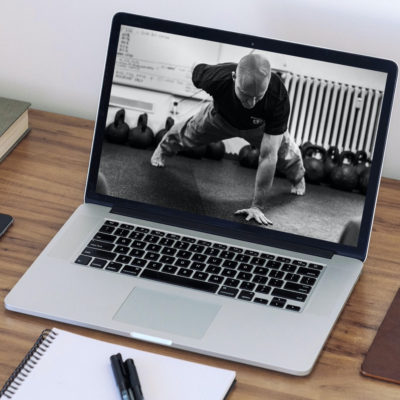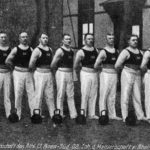The juggling of kettle-bells is a broad subject and I will not attempt to outline all the juggling stunts that are possible, but will merely give you instructions on a few of the most common.
As the title states, you need a kettle-bell or two, or ring-weights with stationary handles. Weights of any shape, but sphere or oval are to be shunned because of the damage possible to your hands from the corners or edges of a ring-weight that is square or odd shaped. Another precaution is being careful of the finger tips and nails when catching the turning handle of the bell.
If you like this form of weight-handling, which really is very sensational when cleverly done, I advise a glove with slightly padded finger tips for practice. You can use a pair of old kid gloves by stuffing a little raw cotton in each finger. A glove that is too bulky, loose-fitting and with too much packing in the fingers will make your hand cumbersome and retard your ability. You must practice weight-juggling out of doors where the bells can drop on the ground when missed or you must have a mat on a solid floor if tried indoors.
One of the primary juggling feats is throwing the bell up in front of you without spinning the handle and catching it with either hand. In most all kettle-bell jug-gling stunts you can throw and catch with the same hand or alternate the throw and catch with first the right hand and then the left.
The illustration in the photo section will show you the correct position for swinging the bell between the legs and into the air.
After you have mastered the catching of the handle without the spin to it you can try throwing the bell up as before but giving the handle a slight flip outward as it leaves your hand. To explain that more clearly: as the bell swings up from between your legs the sphere swings out and up so that if you retained your grip on the handle the ball would swing over the back of the hand on to the back of the forearm. But as the ball swings out to a level with the fist you flip the handle under the ball and away from you and leave go. You may flip it too much at first for this particular primary stunt which is completed by catching the bell on the palm by the bottom of the ball. That is, when the stunt is finished the bell is standing handle up on your hand, which will be at shoulder height with tinger tips toward your back.
The difficult part of this one and most all kettle-bell juggling feats is to flip or turn the bell over in the air just enough to make it come around as you want it to, either handle or bottom first.
After these simple catches have been made to your satisfaction you can try a catch from a full turn of the handle. Swing the bell as before and flip the handle, but give it a little force and the entire bell a little more height. The idea is to spin the bell so that when it comes down to the catching position the handle will have turned almost completely around the sphere and is coming toward you over the top of the bell as you grab it. It takes practice, of course, but at that you will be surprised how quickly you begin to get the “hang” of it.
After you make a catch from a full turn of the handle, allow the bell to swing down between the legs and repeat the catch either with the same hand or the other.
The double spin and catch is, of course, more difficult than the single, but it is easily possible after practice. I have caught a bell by the handle time and time again that I threw as high as possible and spun as fast as I
could – so fast that it was impossible to count the turns.
In this one you simply take a chance on the handle being in a catching position when it comes down to the catching height. You can, however, learn to watch the bell so closely that if the handle isn’t around in time you wait an instant and catch it lower, giving it time to turn farther, which at its great speed takes only a fraction of a second. If the handle looks as though it will be too far around then it can be caught higher and sooner.
There are two other feats that should not be tried by a beginner. One is the throwing of the bell up over the head and while it is in the air turning around facing the other direction and catch the handle. The second is throwing the bell with a back-hand motion past the side and back over the shoulder, catching it as it comes down in front. The position of the body is not changed in this one.
Most all of these feats can be practiced with a friend, too. A chum who is as good at it as you can stand ten or fifteen feet from you, facing you and then you both can flip the bell back and forth. There are others which you can think out for yourself when you get this far advanced.
- Charles Mac Mahon, Kettle-Bell Juggling, in: Feats of Strength and Dexterity, and How to Perform Them, 1927








![The Incomparable Arthur Saxon [VIDEO]](https://simplexstrong.com/wp-content/uploads/2020/04/arthur-saxon-kettlebell-rogue-video-150x150.jpg)








